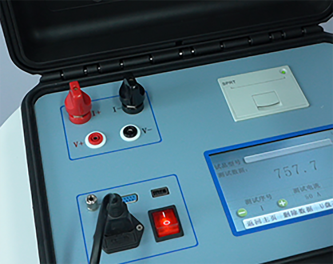 English
English



-
 Afrikaans
Afrikaans -
 Albanian
Albanian -
 Amharic
Amharic -
 Arabic
Arabic -
 Armenian
Armenian -
 Azerbaijani
Azerbaijani -
 Basque
Basque -
 Belarusian
Belarusian -
 Bengali
Bengali -
 Bosnian
Bosnian -
 Bulgarian
Bulgarian -
 Catalan
Catalan -
 Cebuano
Cebuano -
 China
China -
 China (Taiwan)
China (Taiwan) -
 Corsican
Corsican -
 Croatian
Croatian -
 Czech
Czech -
 Danish
Danish -
 Dutch
Dutch -
 English
English -
 Esperanto
Esperanto -
 Estonian
Estonian -
 Finnish
Finnish -
 French
French -
 Frisian
Frisian -
 Galician
Galician -
 Georgian
Georgian -
 German
German -
 Greek
Greek -
 Gujarati
Gujarati -
 Haitian Creole
Haitian Creole -
 hausa
hausa -
 hawaiian
hawaiian -
 Hebrew
Hebrew -
 Hindi
Hindi -
 Miao
Miao -
 Hungarian
Hungarian -
 Icelandic
Icelandic -
 igbo
igbo -
 Indonesian
Indonesian -
 irish
irish -
 Italian
Italian -
 Japanese
Japanese -
 Javanese
Javanese -
 Kannada
Kannada -
 kazakh
kazakh -
 Khmer
Khmer -
 Rwandese
Rwandese -
 Korean
Korean -
 Kurdish
Kurdish -
 Kyrgyz
Kyrgyz -
 Lao
Lao -
 Latin
Latin -
 Latvian
Latvian -
 Lithuanian
Lithuanian -
 Luxembourgish
Luxembourgish -
 Macedonian
Macedonian -
 Malgashi
Malgashi -
 Malay
Malay -
 Malayalam
Malayalam -
 Maltese
Maltese -
 Maori
Maori -
 Marathi
Marathi -
 Mongolian
Mongolian -
 Myanmar
Myanmar -
 Nepali
Nepali -
 Norwegian
Norwegian -
 Norwegian
Norwegian -
 Occitan
Occitan -
 Pashto
Pashto -
 Persian
Persian -
 Polish
Polish -
 Portuguese
Portuguese -
 Punjabi
Punjabi -
 Romanian
Romanian -
 Russian
Russian -
 Samoan
Samoan -
 Scottish Gaelic
Scottish Gaelic -
 Serbian
Serbian -
 Sesotho
Sesotho -
 Shona
Shona -
 Sindhi
Sindhi -
 Sinhala
Sinhala -
 Slovak
Slovak -
 Slovenian
Slovenian -
 Somali
Somali -
 Spanish
Spanish -
 Sundanese
Sundanese -
 Swahili
Swahili -
 Swedish
Swedish -
 Tagalog
Tagalog -
 Tajik
Tajik -
 Tamil
Tamil -
 Tatar
Tatar -
 Telugu
Telugu -
 Thai
Thai -
 Turkish
Turkish -
 Turkmen
Turkmen -
 Ukrainian
Ukrainian -
 Urdu
Urdu -
 Uighur
Uighur -
 Uzbek
Uzbek -
 Vietnamese
Vietnamese -
 Welsh
Welsh -
 Bantu
Bantu -
 Yiddish
Yiddish -
 Yoruba
Yoruba -
 Zulu
Zulu
transformer oil check
Understanding Transformer Oil Checks Importance and Procedures
Transformer oil plays a critical role in the functionality and reliability of electrical transformers. It serves dual purposes cooling the transformer and insulating its internal components. Regular checks of transformer oil are imperative for ensuring the longevity and operational efficiency of the transformers, which are vital in electrical distribution and transmission systems.
Importance of Transformer Oil Checks
The primary reason for conducting regular oil checks is to monitor the condition of the oil itself. Over time, transformer oil can undergo physical and chemical changes due to thermal stress and contaminants. These changes can affect the oil's dielectric strength, leading to a reduction in its effectiveness as an insulator and coolant. By regularly checking the oil, operators can detect any deterioration early, preventing potential failures and costly downtime.
Furthermore, transformer oil can accumulate various contaminants, such as water, particulate matter, and gases like hydrogen and methane, which may result from insulation degradation. An increase in moisture levels is particularly concerning, as it significantly decreases the dielectric strength of the oil and can lead to corrosion of transformer components. Routine oil analysis helps in identifying these contaminants and taking corrective measures to ensure system reliability.
Procedures for Transformer Oil Checks
The process of transformer oil checking typically involves several critical steps
. First, the oil samples must be taken according to standardized procedures to prevent contamination before analysis. Use clean tools and follow safety protocols to ensure accurate results.transformer oil check

1. Visual Inspection Before any lab analysis, a visual inspection of the transformer oil is performed. Look for discoloration, cloudiness, or particulate matter in the oil. These can be initial indicators of degradation.
2. Dielectric Strength Test This test checks the oil's ability to withstand electrical stress. A decrease in dielectric strength signifies the presence of moisture or contaminants and warrants further investigation.
3. Moisture Content Analysis Using a Karl Fischer titrator, technicians can quantify the water content in the oil. The acceptable moisture level typically varies by manufacturer specifications, but exceeding this can pose risks to the transformer's functionality.
4. Dissolved Gas Analysis (DGA) DGA is a crucial test for detecting gas levels dissolved in transformer oil. Specific gas levels can indicate different types of electrical or thermal faults within the transformer.
5. Furan Analysis This analysis is conducted to assess the condition of the cellulose insulation. High levels of furan indicate degradation of the paper insulation, which can compromise the transformer’s structural integrity.
Conclusion
Regular transformer oil checks are an essential part of transformer maintenance. By understanding the significance and properly executing oil testing procedures, facility managers can enhance transformer reliability, prevent unexpected failures, and extend asset life. Consequently, these practices lead to improved operational efficiency and reduced maintenance costs, ensuring a smooth electrical distribution process. Investing in proper oil checks ultimately safeguards one of the most critical components of electrical infrastructure.
-
Testing Equipment Industry Sees Major Advancements in 2025: Smart & Precision Technologies Lead the WayNewsJun.06,2025
-
Applications of Direct Current Generators in Renewable Energy SystemsNewsJun.05,2025
-
Hipot Tester Calibration and Accuracy GuidelinesNewsJun.05,2025
-
Digital Circuit Breaker Analyzer Features and BenefitsNewsJun.05,2025
-
Benefits of Real-Time Power Quality Monitoring Devices for Industrial EfficiencyNewsJun.05,2025
-
Earth Fault Loop Testing in High-Rise Building Electrical SystemsNewsJun.05,2025



